Considering A History of Chowder: Four Centuries of a New England Meal.
1. The undertold story of a legendary dish.
For so storied a subject, little has been written about chowder, its origin and history. The most recent addition to a short shelf, A History of Chowder: Four Centuries of a New England Meal , appeared in 2011, although Keith Stavely and Kathleen Fitzgerald devoted six luminous pages to the dish that same year in Northern Hospitality: Cooking by the Book in New England. Other than their date of publication and overlapping subject matter, however, the two books share nearly nothing. Earlier efforts, notably by Richard J. Hooker and John Thorne, also merit mention.
One of the authors of Chowder , Jacob Walker, operates “The New England Chowder Compendium,” a collection of recipes at the University of Massachusetts in Amherst where he earned an undergraduate degree. The other, Robert Cox, “works at” the university according to the endpaper of the book. It does not identify his position, but as of 2011 Cox was the ‘Head of its Special Collections,’ which houses Walker’s compendium in its Beatrice McIntosh Cookery Collection, and the ‘University Archives.’ (Marcoux)
Chowder has not attracted many reviewers although an article by Paula Marcoux called “Edible Celebrations: Chowder Lives!” did appear in an issue of the reliably uncritical Edible series, Edible South Shore & South Coast . She likes A History of Chowder.
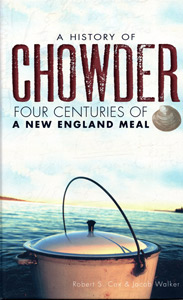
2. Reports of its demise have been premature.
Marcoux begins her review with an untenable conceit. “Just a few years ago, real chowder appeared to be poised on the brink of extinction.” This, however, receives an immediate qualification.
“The New England homemade chowder tradition was beginning to seem like one of those dying languages; most of the individuals who could speak and understand it were elderly and disappearing themselves.” (Marcoux)
Marcoux contends chowder had become endangered because restaurant versions are dismal, “sea-free wallpaper paste” or “‘prize-winning,’ ‘best-of-wherever,’ bowls of white glue (clam or fish? Who can tell?).” As for those elderly linguists fluent in the language of chowder, “quite possibly the resulting despair drove some to an early grave.” (Marcoux)
It is easy enough to encounter bad restaurant chowder, particularly it seems in Boston and perhaps if Marcoux is right also in its south shore suburbs. We do not know. Good as well as bad chowders, however, abound in Boston. At Townsman to cite but a single example, Kate and Matt Jennings give theirs a proper base of salt pork and lace it with squid. Its flavors are as fierce as the logo on their merchandise and that is good.

A source of salt pork or perhaps boar
Elsewhere in New England chowder never suffered any decline beyond the dining rooms of pricey hotels, which did not single out that dish alone for debasement. In 1978, Hooker noted that “though degraded in many restaurants, the dish called chowder is alive and healthy.” By 1985, Food & Wine had splashed a photograph of chowder across its cover and the reversal of any putative decline began the acceleration that would gain it the ‘fine dining’ stature prefigured by Hooker’s Book of Chowder. By the time Jasper White’s celebration of the dish, 50 Chowders , appeared in 2000 chowder had become a culinary fashion. (Hooker 10; White 26)
In tiny Watch Hill, Rhode Island, alone a shopper or diner has long been able to choose from at least six different chowders, two of them clear Rhode Island style. Only the version at the overpriced and inept Ocean House fails to exceed expectations, while the Rhode Island chowder at the Bay Street Deli is good and at St. Clair Annex sublime.
3. Happy readers or complicit compatriots?
As for Chowder the book, Marcoux considers it “an engaging and informative documentary narrative” that “lays out an array of carefully dated historic recipes and their interpretations.” (Marcoux) Apparently she is unfamiliar with the meaning of the term array: Chowder includes but nine recipes for the dish, while neglecting to ‘interpret’ any of them including the first, a ghastly “diet chowder” from 1970 devoid of salt pork or bacon but made with skim milk, dehydrated onion and parsley flakes, and “oleo.” It would be an understatement to call the thing an odd choice and it would be understandable not to consider the abomination a chowder at all.
Nonetheless online purchasers have been as complimentary about Chowder as Marcoux. Each of the five Amazon reviewers award the book five out of five stars. More people reviewed it at Goodreads and all of them reached a similar conclusion. ‘Raphael7’ wrote on the Amazon site with more enthusiasm than coherence “I tell you good food best book ever;” John Carway added “I have always been a great chowder fan. This book puts it all into perspective.”
In his Amazon review, Ralph Hennen, whose style or lack of it is not dissimilar to Raphael7’s, takes a sort of philosophical tack:
“If salt pork, fish, and clams are gems of the land and sea,” itself a somewhat jarring image, “then this book is a gem of the library and kitchen. I spend much time sailing the coast of New England and having chowder at every opportunity trying to figure the existential meaning of chowder and the wide varieties I find [sic]. Then I ran into this book--and now I know. The thing that amazes me about this book is how well written it is. Even if I weren’t a chowder eater, this is an entertaining text in its own right that I’d completely enjoy. The history covered in this book of the beginning of this country is an excellent prospective [sic sic] of how times change and how they stay the same…. Now I’d like to see them write one on Chili in the US.”
Over at Goodreads, ‘Beth Anne’ wastes no words with her advice for women to consume seawater:
“This book makes a lady want to drink the sea, dip a cup in it, and bring it home to add a cracker to it. I love it so! perfect [sic] for imbuing yourself in excitement [sic redux] about living in New England.”
As breathtaking as readers must find both Hennen and Beth Anne, whose picture at Goodreads indicates that she is in fact no lady but rather a dachshund, the piece de résistance, or perhaps pièce de collaboration of Chowder reviews belongs to D. N. Stone, who posted his effusive praise at both Amazon and Goodreads.
“What a nifty little history. This book is certain to be the last word on chowder (not just clam) for years to come. The authors strike a good balance between rhapsodic and scholarly. If you’re looking for the origins of the word chowder, the first recipes, literary references to chowder or the fraught histories of the constituent ingredients [!?!], you’ll find it here. How I long to have lived in the days of the great chowder parties described here, when chowder masters strode New England like demigods. I also loved the artistic photos throughout the book. Chowder has never looked so beautiful than posed here in a beach [sic]….
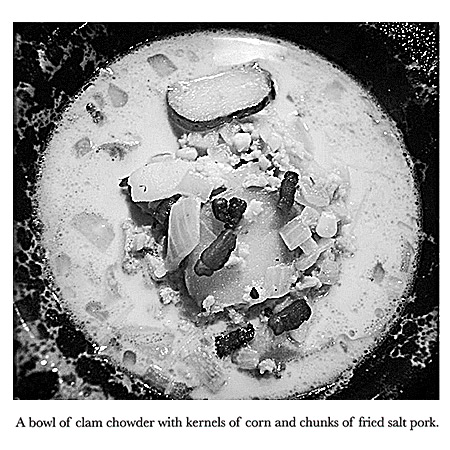
Artistic photo of chowder, or a petri dish, from A History of Chowder
Here in Rhode Island we like clear, tomato and milk chowders all alike, although the authors say we are too small a state for so many options. But it’s all in fun when it comes to opinions about what the authors call ‘this most social dish.’ This most superb book deserves a wide readership.”
All these reviews elicit a common response in addition to bemusement in both the preferred and less favored usage of the term. After the merest glance at A History of Chowder the suspicion arises that none of these enthusiasts has read the book.
4. Brain of whale, eyelid of fish and paralysis of tongue.
The authors introduce their subject with a description of some medical remedies concocted by a nun in the twelfth century Rhineland. One is an ulcer ointment made “of whale brain and water, boiled and mashed with goutweed and oil.” Other medicines include fish eyelids marinated in warm wine (“a paralyzed tongue will come untied [sic]”) and ground fishbones for feeding pigs (to eliminate plague amongst humans).
“Her powerful remedies,” Cox and Walker confide, “are not meals.” In case the reader suffers from profound stupidity, the authors explain further that the medieval remedies “are not testaments to early chowder making found far from the New England shoreline.” Why then begin a book about chowder without reference to food, let alone to chowder itself? The useless (and fanciful; fish do not have eyelids) potions are, the authors intone, “reminders of simple importance.” What, we might also wonder, is the “simple importance” of superstitious inutility? Something, the authors think, of epochal importance: “The world over, playing with fish, fat and water has long been part of our humanity.” ( Chowder 1)
This playing with commodities stands on par, no doubt, with sexual desire, the language instinct and Samaritan impulse to define our humanity. Somehow the remedies provide Cox and Walker with a segue to the assertion that “in essence we are up to the same tricks” as the Rhenish nun: “Today, the restorative powers of food,” much like the restorative properties inherent in unguent of whale brain and goutweed,
“can be sidelined in favor of celebrations of certain ingredients or exercises in overeating. Chowder, however, carries on its good work. It can be part of the way to live a better life here. If all our references to chowder were to vanish, many might collapse into despair.” ( Chowder 1-2)
The idiocy of this passage might leave any reader speechless, except to note that its creators proceed to do what they claim to decry, and ‘celebrate certain ingredients.’ Chowder devotes entire chapters to salt pork, potatoes, fish and clams in turn.
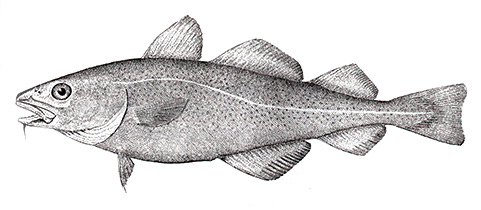
5. An essay in misdirection.
What its authors decide not to do is deliver on the promise of its title. Seventeen pages on, as Cox and Walker observe in the chapter they have inscrutably entitled “Chowder Has an Identity,” “it would be a fine idea to begin a discussion of chowder with an introduction to where it originated and what it is,” if not, presumably, as fine an idea as beginning the discussion with Medieval medicine. Taking a perverse turn, the authors then declare: “That we will not do.” ( Chowder 17)
To be fair, it is the apparent intent of the authors to display a sense of humor, but the jokes fall flat because the effort is awkward and strained, sitting as it does in discomfort with their parallel impulse to take themselves seriously. A bigger problem with this uneasy entente is the tendency of Cox and Walker to get so many things so wrong.
When, for example, they decide to dabble in historiographical fashion they choose to employ the hot concept of gender identity but fail to execute their argument with any accuracy. Whether or not chowder represents a preternatural manifestation of masculinity may (or may not) be a fair question but Cox and Walker do not manage to make their case. And in contrast to the celebratory tone of other authors engaged in the dubious practice of categorizing writers predominantly by gender, theirs is patronizing.
6. Manly men and dainty women?
Cox and Walker may be right about one thing. Chowder “was a sea-borne dish that made its way ashore, rather than vice-versa, and it was created according to the stringent realities of shipboard life” before the advent of canning or refrigeration.
From this, they argue, chowder “was a distinctly masculine dish, prepared by men for men” but, they add, “(and sometimes women).” Later Cox and Walker maintain “chowder has remained a resolutely masculine dish” but also qualify that declaration with an aside; “chowder parties often included women as well as men.” ( Chowder 27, 45) Chowder may have originated at sea in an era when all sailors (other than pirates) were men, but the observation that men cooked the first chowders does not distinguish them from thousands of other dishes not considered ‘masculine.’

Manly chowder men.
The bigger problem that bedevils Cox and Walker lies with the means they have chosen to categorize chowder by gender. According to them, when women turned their hands to chowder, they “could not resist introducing a refining touch” in contrast to sturdy male simplicity. The primary perpetrators of this evisceration are, according to Cox and Walker, Hannah Glasse, Lydia Maria Child, Catherine Beecher and Eliza Leslie (who anyway was from Philadelphia, not New England). We may dispatch Glasse and the few other British chowderhounds summarily as outliers. As Thorne observes, “one looks in vain for the name or recipe in collections of British dishes. Chowder just did not catch on.” (Thorne 158)
Nonetheless Thorne considers Glasse’s version (which Richard Briggs who quite obviously was male reproduced as his own in 1794) “an authentic chowder recipe,” notwithstanding its optional additions of oysters and mushrooms, which denoted luxury, not daintiness, at the time. These were ingredients beloved of la Varenne and other (invariably male) court cooks working in England, but while mushrooms were costly oysters were cheap.
As Cox and Walker themselves disclose, Francis Grose in “his Classical Dictionary of the Vulgar Tongue defined chowder during 1788 as ‘a sea dish’ that includes herbs.” ( Chowder 36) He describes a shipboard dish including some of the additives the authors want their reader to believe could not exist at sea.
An abolitionist, novelist and reformer, Child is a wonderful figure who wrote one of the most humane and unpretentious cookbooks of any age, The American Frugal Housewife , in 1829; the only item that separates her fish chowder from the simplest of its or any age is the optional addition of lemon and ketchup. After all, her book was dedicated to economy, not daintiness, and also “gives meat,” which was cheap and plentiful in New England, “a prominent place among the recipes.” These are by no means delicate preparations but rather rely on “roasting, broiling, stewing” and “hashing.” Hearty pies also appear. (Sloat 11-12)
Earlier editions of The American Frugal Housewife note that “[s]ome people put in a cup of beer,” but from 1831 onward the notation disappeared. Child’s three, and latterly two, optional ingredients hardly stamp the chowder female: Male authors of the time went further, and made various ketchups and other additives integral to their recipes. As Hooker notes, Child’s version “is a fairly orthodox Boston chowder of the pre-milk era.” (Hooker 34) And it is by no means dainty in its reliance on soda crackers, salt pork and potatoes.
Beecher is not so sympathetic a figure as Child. To steal a wry analogy from Stavely and Fitzgerald, she “was the nineteenth century’s Martha Stewart, not its Julia Child.” ( Northern Hospitality 94; see the Notes) While it may be somewhat anachronistic to label Beecher a hypocrite, she did include the “rich and elegant” dishes she claimed to condemn in her Domestic Receipt-Book , which first appeared in 1846, because they fuelled sales and because, she rather disingenuously insisted, temptation coexists with righteousness in the Bible. (Stavely & Fitzgerald 88)
“Gratifying the palate,” Stavely and Fitzgerald explain, “is… merely tolerated in Miss Beecher’s Domestic Receipt-Book , surviving covertly here and there… but nowhere openly avowed, let alone celebrated.” ( Northern Hospitality 91) Cox and Walker, however, consider “[f]ancy ketchup” and lemon juice “refinements” to Beecher’s recipe that always are absent from galleys at sea.
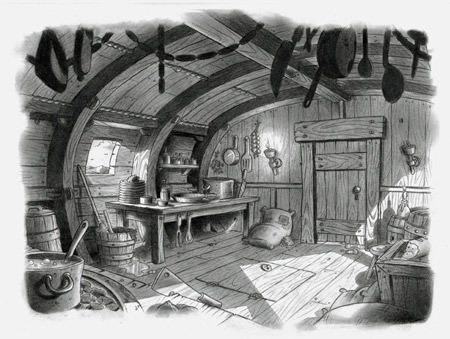
Time to make the manly chowder, hold the ketchup.
Galley cooks wrote nothing down; by definition, however, cookbook authors must record all that they address. So even though we may not know how galley cooks plied their trade, we can do better than guess by consulting published sources. During the eighteenth century, it was common for English cookbooks to include a chapter or chapters on the production and cooking of provisions for use onboard ship, among them various ketchups and other flavorings.
From its first edition in 1747 for example, Glasse’s Art of Cookery Made Plain and Easy included an entire chapter “For Captains of Ships.” It includes a “Ketchup to keep twenty Years” made from beer, anchovy, mushrooms and a typically English spice mix. A ship may, Glasse assures her reader, “carry it to the Indies .” (Glasse 121-22; emphasis in original) Other seasonings for sea from The Art of Cookery include fish sauce, pickled mushrooms and mushroom powder, each the kind of thing Cox and Walker would consign to land alone. (Glasse 122)
At least as early as the eighteenth century, Royal Navy warships also stocked “stores of nutmegs, ginger, cloves and cinnamon,” while officers shipped anchovies, chutneys and pickles, pickled oysters, curry powder and other condiments. (Macdonald 132, 128-30) Although the navy tended to treat its sailors better than merchant captains treated theirs, its Victualling Board published its own instructions for cooks aboard its warships, so the proliferation of recipes for ketchups categorized as sea stores indicates they had a civil as well as naval market.
In 1853, over two decades after Child gave her reader the option to add “catchup” to her chowder, and only two years after Melville’s famous description of plain Nantucket chowders made alternatively with fish or clams, salt pork, onions and not much more, Thomas Branston published a recipe explicitly entitled “Marine Ketchup” made with anchovies, mushroom ketchup, shallot and other flavorings. It was, he notes, “[u]sed for sea-stores.” (Branston 117)
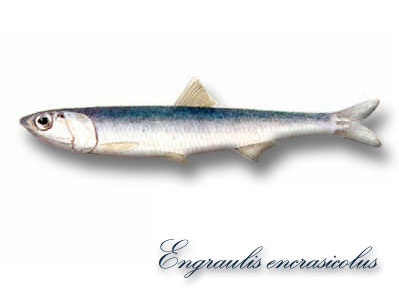
Thomas Cooper (not female) would have found the product handy in 1824, five years before Child sometimes added ketchup to her chowder, when his recipe required a tablespoon of anchovy sauce and glass of wine. He apparently did not have any of Branston’s ketchup, so Cooper made his own anchovy sauce, which sounds virtually the same. (Hooker 32)
The version of clam chowder Pierre Blot included in his Hand-Book of Practical Cookery from 1867 includes tomatoes and notes that “thyme, cloves, bay-leaves, and tarragon” “are sometimes added according to taste” along with the usual culprits, but then again Blot was French and his recipe comes from New York. Lest his reader doubt the gender of its authors, Blot makes it explicit:
“It generally is admitted that the boatmen prepare it better than others, and the receipts [sic; he has one] we give below come from the most experienced chowder-men of the Harlem River.” (Blot 159-60)
Jumping to the twentieth century, baroque recipes for chowder written by men proliferate. “Ted Williams’s Fenway Chowder” does not include ketchup but does require twenty-five ingredients including two species of fish, three of shellfish, lemon juice, Sherry, two different bell peppers and a pair of proprietary spice mixtures, Lawry’s Seasoned Salt and Old Bay Seasoning. (O’Neill 121)
James Beard flavored his razor clam chowder with Tabasco and Cognac; Louis De Gouy incorporated bay, clove, celery leaf, parsley and thyme in his Newfoundland cod chowder, and he seasons a lobster chowder similarly and adds Sherry as well. (Hooker 124, 110, 108) According to Hooker, a recipe for fish chowder from Alex Hawkes “is fussy, perhaps unnecessarily so, but it leads to a very fine, delicate dish of good proportions.” Effeminate indeed. (Hooker 125)
More generally, Cox and Walker claim that all “female cookbook writers made concerted efforts to domesticate chowder and bring it firmly within what was sometimes called the women’s sphere.” ( Chowder 37) What of other chowders recorded by women?
Conventional wisdom gives Amelia Simmons credit for writing the first American cookbook, American Cookery (which, however, includes mostly recipes cribbed or modified from British sources) in 1796. The first edition does not include chowder, but a recipe arrives with the second, in 1800. ( see the Notes) It may be the plainest recipe of all, consisting only of bass, salt pork and crackers, although Simmons does garnish her chowder with parsley and recommend accompaniments. Cox and Walker neither discuss the recipe nor disclose the existence of the book even though it is cited by historians of American foodways with near universality.
In Home Cookery from 1853, a Mrs. J. Chadwick describes chowder more austere than those published by any number of male authors. It layers in turn just salt pork, clams, onion and crackers seasoned with the essential salt and pepper, and thickened with a ‘shake’ of “considerable flour.” This, as Stavely and Fitzgerald observe,
“is a fully rendered recipe for clam chowder. However, it remains the solid casserole we have seen repeatedly. It lacks both the potatoes and the milk or cream that were being introduced into fish chowders…. ” ( Northern Hospitality 131)
We might dispense with the 1857 recipe from Leslie because, as Cox and Walker concede in a strange turn, she identifies it “as a man’s recipe” contributed by a Commodore Stovens, and we have no reason to doubt her. ( Chowder 40) The strange nature of its treatment in Chowder , however, requires a little explication. Undeterred by the origin of the recipe, the authors claim it represents an exercise in female vanity. This exercise requires
“fripperies such as mushroom catsup, fresh marjoram and basil, port wine, cloves and mace, and Leslie noted that there were other options for the cook to display her skill: the cod and sea bass she preferred could be substituted with [sic] clams, oysters or crabs…. Unlike the rough-and-ready fare of a ship’s galley, … the domestic cook was expected to show a wide awareness of the possibilities of food and providing sustenance,” whatever that means, “and to display special skill in its preparation.” ( Chowder 40)
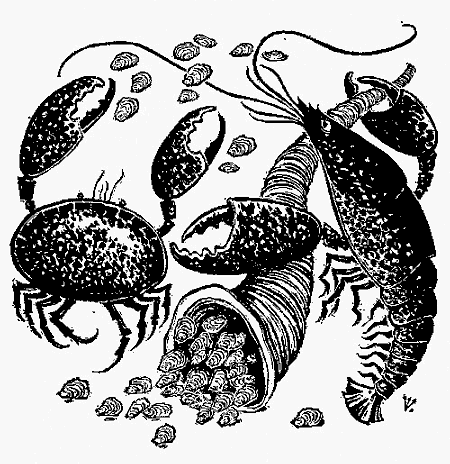 Feminine chowder fripperies?
Feminine chowder fripperies?
We already have considered the ‘fripperies;’ what renders the rest of the passage peculiar is the disingenuous cast of the other statements. The argument that Leslie herself preferred fin over shellfish when the recipe originated with another (male) writer is itself astonishing. So is the unfounded notion that recommending substitutes for finfish would allow the cook, somehow, “to display special skill.” Dumping one kind of seafood into a stewpot instead of another displays nothing special and requires no particular skill.
This is all the more puzzling because the fish that went into “the rough-and-ready fare of a ship’s galley” was by tradition as variable as the species found in the seas where the ship might sail. “All sea dishes,” as Hooker understands, “had to accommodate themselves to what was at hand.” (Hooker 4) Speaking specifically of chowder, Jasper White explains that its “range of ingredients… was enriched and expanded by new locales and by necessity,” (White 75) not by women intent on display.
In addition, during Leslie’s lifetime finfish was dearer than shellfish, and cod in particular commanded a premium. The substitutions she suggested were not for show. When the Stovens recipe appeared, “suspicions about the suitability of shellfish linger[ed].” ( Founding Food 92) Clams in particular took time to gain favor. As Thorne explains, clams were considered “trash fish” by many diners “well into” the nineteenth century. (Thorne 188) The suggestion to substitute shellfish was more a nod to the less well off, less (or not at all) a means of symbolizing social stature.
Now for the kicker; Leslie offered her own recipe for chowder in addition to Commodore Stovens’. Her “Yankee Chowder,” also from 1857, consists of salt pork, onion, crackers, whatever fish the cook has to hand (“sea-bass, black fish, tautog, porgie, haddock, or fresh cod”)--again, out of economy and availability, not for showing off--clam broth and milk. In contrast to many chowder recipes written by men, it contains no kickshaws, no ketchup or lemon, no marjoram or other fresh herb, no liquid other than water.
Other female authors offer similarly austere, ‘masculine’ or ‘unrefined’ chowders.
Naomi Donnelley disregarded the contemporary evolution of the dish from pottage to broth in 1882, although she does add the milk absent from the earliest recipes. Hers for fish chowder from The Home-Made Cook Book represents an unabashed anachronism, the kind of dense layered dish cooked in cauldrons at sea in the seventeenth century. It begins with fried salt pork and onions, then seasoned haddock followed by potatoes in sequence “till the fish is used up.” She then covers the strata with water and adds pounded “biscuits or crackers fine as meal” followed by milk to “scald well.” (Donnelley 3)
Mary J. Lincoln, Fanny Farmer’s predecessor at the influential Boston Cookery School, offered her audience a sort of read option chowder in 1884. The base version is devoid of extraneous additives. If, however, “a highly seasoned dish be desired,” the cook could add “either cayenne pepper, Worcestershire sauce or curry powder” to the basic preparation of fish (“Any firm fish may be used for chowder, but cod and haddock are best.”), salt pork, onions, potatoes, milk and crackers. A single optional ingredient hardly appears a ‘frippery,’ ‘refinement’ or ‘domesticated’ touch. As Hooker says without reference to gender, and he never does refer to gender, “this excellent recipe should be read as a knowledgeable essay on fish chowder.” (Hooker 62-64)
Farmer herself published the same recipe but without the “highly seasoned option” in 1896. The first edition of her famed Boston Cooking-School Cook Book also includes an evidently austere clam chowder made only with, salt pork, onion, potato, crackers, milk and of course the clams. Her lobster chowder from the same edition is just as plain. (Farmer 127-28) The 1901 edition of Mrs. Lincoln’s Boston Cook Book follows suit with the same recipe. (Lincoln 156) June Platt’s twentieth century chowders made with haddock (the only option given) or quahogs are just as simple. She is decidedly conservative in incorporating crackers, and incidentally goes further in providing a good recipe for roasting them with butter. (Platt 3-5)
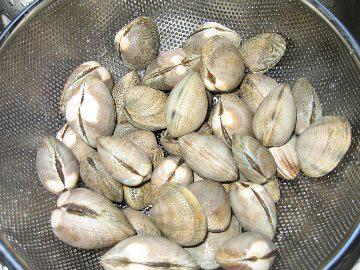
According to White, early chowder cooks, not chowders created by women alone, made “bold use of herbs and spices” before adding liquid, “usually water, wine, beer or cider.” (White 21, 28) He cites a chowder recipe set in doggerel from the 23 September 1751 Boston Evening Post to make the point. It requires “Parsley, Sweet-Marjoram, Savory and Thyme” along with an entire bottle of Bordeaux. Newspapers of the time invariably were the province of men and nothing suggests the Post had decided to break any mold. Oddly enough Cox and Walker cite it too.
As White also explains, the lavish use of herb and spice was “a practice that would die out in the early 1800s.” (White 21) The historical trend, unrelated to gender bias, had been toward simplification, at least before the advent of complex chowders like the twentieth century one crafted by Williams and many of White’s own creations.
7. Unlikely bowel movements.
In their belabored effort to portray chowder as unique, Cox and Walker attempt to draw a number of baseless and bizarre distinctions. In their discussion of its maritime pedigree, they assert that “a sailor’s diet was often monotonous, seldom adventurous, but always essential.” Essential as opposed to whose diets? Perhaps the authors have found a colony of human heliotropes or even epiphytes, but if not then it would be difficult to imagine whose diet is not essential.
At this point things get worse as well as redundant, and fast. “Make no mistake about it,” the authors elaborate, “food was an essential part of this world. If an army travels on its stomach, a ship sails by its bowels.” ( Chowder 25) An army of course is an aggregation of (traditionally male) people but a ship is inanimate, an unbiological artifact. Setting on one side the grammatical gaffe and the revolting proctological imagery, what are the authors attempting to say?
Are sailors onboard ship physiologically distinct from soldiers on the march? Perhaps not; perhaps Cox and Walker infer it is the practice in some fleets to provide their sailors with nutrients by suppository. Then again that would rule out the consumption of chowder at sea unless as an encapsulated slurry. No practitioners of any such procedure have recorded it, although the more discreet or squeamish would have declined to do so. Or maybe some ships were riven with coprophilia; otherwise it remains difficult to discern what this reference to the rectal is supposed to mean.
8. Chowder wreaks wanton destruction while dead pigs built an American empire of greed and stealth pirates plague Spain.
Other assertions and analogies in Chowder are equally absurd.
For example: “To follow just four ingredients--salt pork, potatoes, fish and clams--is to follow how our nation has come to be.” It is not, according to Cox and Walker, an edifying evolution. “Invasion, theft, murder and wanton destruction are not the first things that occur to a person when tucking into a bowl of delicious chowder, but deep in its very making, ingrained ingredient by ingredient, chowder bears the traces of a violent past.” ( Chowder 49) None of these things is anything anyone does or should think about when eating chowder because nothing ties chowder to any them.
For some unfathomable reason Cox and Walker include a passage on Sir Francis Drake (“our piratical Prometheus”) in their canned ‘history’ of the potato. He somehow “spent his career wreaking havoc on the Spanish fleet as a pirate for hire, often under the cloak of high secrecy.” ( Chowder 58) If they mean that Drake sailed as a privateer under letters of marque (he did, some of the time, but also operated as more than a mere raider) they might say so, but do they think his ships had stealth technology? Did Spanish captains think Turks or wraiths were attacking them? Anyway Drake was notorious, in fact famous and feared rather than unknown. And what links him to Prometheus?

The authors make the claim that “[l]ike the industrial revolution, the potato had become essential” at some unspecified time. ( Chowder 66) It is difficult to say anything at all about so incomprehensible a passage. The potato also apparently was “tragic,” but tragedy befalls sentient beings, not tubers, and if Cox and Walker would infer that the potato embodies tragedy due to its association with famine, then pretty much any foodstuff is tragic. India has suffered even more horrific famines than Ireland; are rice and wheat, lentils and other pulses--all staples of the Subcontinent--tragic too? If so what sets the potato apart?
Then there is the pig, “[e]ven in death… the expansionist’s best friend.” This because “barrels could be shipped anywhere New Englanders sailed, to feed the crews who spread American and (later) military power abroad.” ( Chowder 58) New Englanders hardly held a monopoly on salt pork and pork held no monopoly on preserved meat; salt beef, the centerpiece of the New England Boiled dinner that is nearly as iconic as chowder, was plentiful as well. Otherwise the argument that salt pork held a preeminent position in projecting American power is merely as ludicrous as it sounds.
9. Facts? Don’t bother us with your stinking facts.
Aside from these kinds of unsuitable speculations, Chowder gets too many facts wrong. They cite a 1743 English source to argue that “clams were consumed more eagerly than is commonly supposed” in the eighteenth century, but they were not. Perhaps worse, the passage quoted to support the claim has nothing to do with clams, and for good reason: They are not indigenous to the British Isles and never have been cultivated there.
Permanent English settlements did not arise primarily from the beaches where fishermen salted their catch and the English were not “spurred to claim broad stretches of land for their drying operations.” ( Chowder 69)
As Bernard Bailyn and other historians have demonstrated for years now, trade patterns across the Atlantic rim were highly complex and involved a vast array of goods. The reference by Cox and Walker to “the famous triangular trade” is anachronistic, as misplaced as their holding chowder accountable for it. Trade did not cause competition in the eighteenth century or at any other time. Trade is competition and competition itself is not nefarious but Cox and Walker claim that “with so much money at stake, the ugly specter of competition flared.” ( Chowder 72)
The authors would debunk the “familiar grade-school narrative that would have us believe that the Puritans came to our shores to establish the rule of God,” but that is precisely and only what they sought to do whether or not “it was the lure of cod instead that attracted the first Englishmen to North America.” ( Chowder 69)
Overfishing was not a problem until well into the twentieth century; it is counterfactual for Cox and Walker to claim “the fisheries were buckling under the impact of new and more efficient harvesting technologies” during the era of the colonial revival, which did not, as they also maintain, begin during the 1880s. This is particularly true of a revived interest in America’s founding foods.
“As early as a half-century before the 1876 national centennial, the point at which many scholars have marked the beginning of the colonial revival movement, historicized foodways appeared at centennial celebrations and homecoming gatherings across Northeast America.” (Carroll 335)
Cox and Walker introduce a bungled history of canning to argue that under Bonaparte, “[w]ar and violence once again became the template on which chowder would be fashioned,” but they themselves date the first can of chowder to 1865 and nothing links chowder, canned or otherwise, to the French Revolutionary and Napoleonic wars. ( Chowder 81-82)
10. It is not all their fault.
The bad writing, bad research and bad history are not the only problems. The editing of Chowder is bad, and the fault lies with the publisher of the book, The History Press. We do not require reminding within three pages that “the great food writer John Thorne” is “food historian John Thorne.” Nor should the erroneous phrase “[c]howder has retained its status as one of only a handful of masculine meals” appear in the same paragraph as the passage “chowder has remained a resolutely masculine dish” cited earlier.
The same objection applies to the repeated observation that food is essential to sailors, separated as it is by a single sentence. ( Chowder 45, 25) At one point we are told “dairy was also wending its way” into chowder. Two pages on: “As clams began to dig their way into the chowder bowl, so did dairy…. ” ( Chowder 40, 42) It is not only the repetition that rankles; dairy does not wend its way nor can it dig.
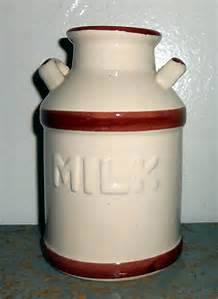
Wending its way, imperceptibly.
A reader perplexed by the use of “estaments” to describe Providence and Pawtucket in Rhode Island may take solace from the observation that the term does not exist.
Cox and Walker refer to N. K. M. Lee but she did not exist either: The 1832 cookbook that appeared under her name was plagiarized entirely from British sources, most notably William Kitchiner. ( Chowder 41; Northern Hospitality 63) The authors quote “the historian R. A. Donkin” but do not identify his book let alone the page where the citation appears. When the text refers to Mark Kurlansky the book in question should be identified and should appear in the bibliography. ( Chowder 51, 24) The bibliography does include an essay on chowder that Thorne published as a pamphlet in Boston during 1982, but the pamphlet is out of print and unavailable. The same essay, however, appears in Serious Pig , the anthology of his writing that Thorne compiled in 1996. The edition is widely available and should have been disclosed.
After a long and ridiculous attempt to link chowder beer, another term for the spruce beer wrongly thought to prevent scurvy (it supposedly “made the empire stronger economically and militarily” anyway even if it is entirely unclear how) with chowder, Cox and Walker concede that their discussion does “little to resolve the question about where chowder originated or whether the term refers to some method of preparation common to beer and soup--perhaps the long simmering involved--to some other property shared by both.” ( Chowder 31)
For once they are understated; their discussion does nothing to indicate where chowder originated and their speculation is absurd. Lots of dishes not called chowder simmer for a long time and the only characteristic shared by chowder and chowder beer is water, which hardly sets them apart from anything else.
To continue any longer with examples of the infelicities that mar A History of Chowder could be construed as piling on, and if we may take at face value the comments of its online adherents, bereft as they may be of fishy demigods, the book may have found an appreciative audience. But is it fair for them to ingest so much that is antihistorical, not to mention unhealthy and indigestible?
Our survey of coherent and useful literature about chowder appears in the lyrical ; recipes for chowder, its crackers and roast crackers appear in the practical.
Notes:
-Cox and Walker apparently like Martha Stewart: “If taste were eternal, Martha Stewart might be queen, but alas it is not and she is not.” ( Chowder 58)
-Keith Stavely and Kathleen Fitzgerald coined the term “America’s founding food” in 2005 with the title of their excellent book on the subject.
-The overwhelming majority of sources call the 1800 version of Simmons’ American Cookery its second edition; one, likely in error, cites a second printing from Albany during 1796, the same year the original edition appeared in Hartford.
Sources:
Pierre Blot, Hand-Book of Practical Cookery (New York 1867)
Thomas Branston, The Druggist’s Hand-Book of Practical Receipts (Liverpool 1853)
Richard Briggs, The English Art of Cookery. According to the Present Practice (London 1794)
Abigail Carroll, “Forefathers’ Day Dinners and Martha Washington Tea: Commemorative Consumption and the Colonial Revival,” Food, Culture and Society: An International Journal of Multidisciplinary Research Vol. 12, Issue 3 (2009) 335-56
Mrs. J. Chadwick, Home Cookery: A Collection of Tried Receipts both Foreign and Domestic (Boston 1853)
Robert Cox & Jacob Walker, A History of Chowder: Four Centuries of a New England Meal (Charleston SC 2011)
Naomi Donnelley (attrib.), The Home-Made Cook Book (New York 1882)
Richard J. Hooker, The Book of Chowder (Boston 1978)
Hannah Glasse, The Art of Cookery Made Plain and Easy (London 1747; Prospect Books facsimile Totnes, Devon 1995)
Mary J. Lincoln, Mrs. Lincoln’s Boston Cook Book (Boston 1901)
Janet Macdonald, Feeding Nelson’s Navy: The True Story of Food at Sea in the Georgian Era (London 2004)
Paula Marcoux, “Edible Celebrations: Chowder Lives!”, Edible South Shore & South Coast (15 September 2011)
Molly O’Neill, One Big Table: A Portrait of American Cooking (New York 2010)
June Platt, June Platt’s New England Cook Book (New York 1971)
Amelia Simmons, American Cookery (Albany 1800)
Caroline Sloat, Old Sturbridge Village Cookbook: Authentic Early American Recipes for the Modern Kitchen (Old Saybrook CT 1995)
Keith Stavely & Kathleen Fitzgerald, Northern Hospitality: Cooking by the Book in New England (Amherst 2011)
John Thorne, Serious Pig (New York 1996)
Jasper White, 50 Chowders: One-Pot Meals--Clam, Corn & Beyond (New York 2000)

